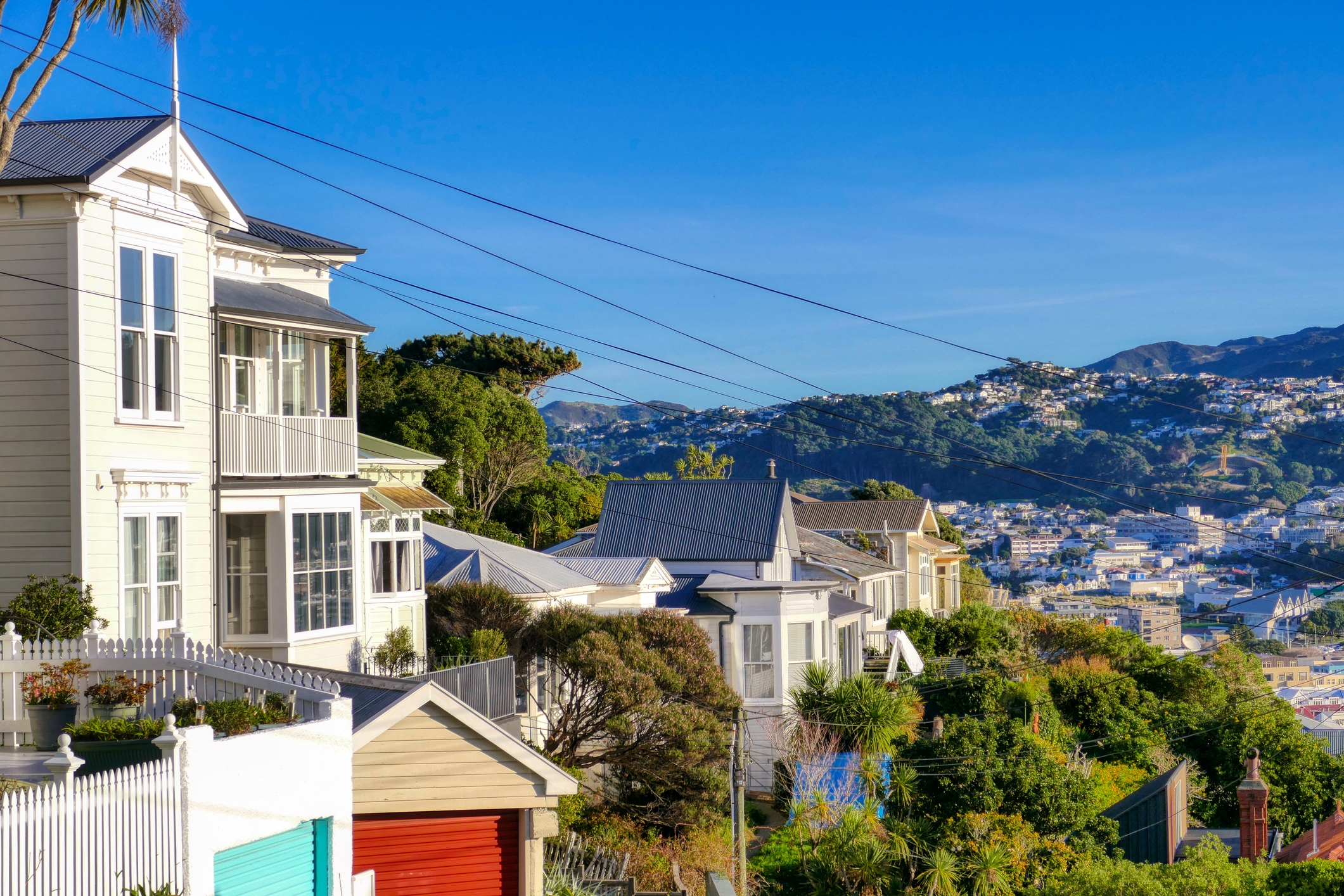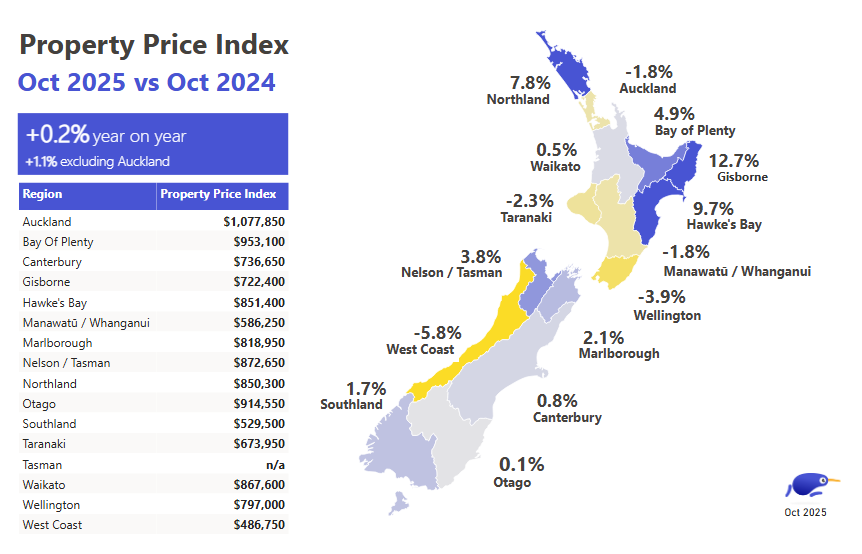News Next article
Spring market hits as buyer activity and listings soar
Property Pulse Report - October 2025
By Gavin Lloyd 6 November 2025The number of properties listed for sale has surged with new listings onsite hitting a four year high in October, according to the Trade Me Property Pulse Report.
New property listings in October were up 29 per cent from September and 3 per cent year-on-year, to the highest levels since late 2021.
The surge in new inventory coincides with growing demand, which is up 11 per cent month-on-month and more than 18 per cent compared to October 2024.
Trade Me Property Customer Director Gavin Lloyd says the numbers point to an active market, and growing confidence as we head towards summer.
“It’s awesome to see the property market firing on all cylinders in October, proving that the spring selling season is well and truly underway,” says Mr Lloyd.
“Buyers appear to be feeling the confidence that comes with more choice too as we’ve seen strong demand both compared to September and year-on-year.”
A surge in new listings
Spring has sprung and so have the number of new listings on Trade Me Property with year-on-year supply up 5.9 per cent and close to 19 per cent from August. Meanwhile, property searches by prospective buyers skyrocketed, increasing by more than 24 per cent compared to September 2024.
"The spring selling season has kicked off with a burst of activity," says Mr Lloyd.
“More buyers actively looking and more properties coming to market suggests confidence is growing and we can expect a very busy spring for the property sector."
Asking prices up across the motu
The national average asking price in October was $883,200, a 6 per cent increase - or nearly $48,000 from September, and flat (0.2%) year-on-year.
| Region | Property Price Index | YoY % change | |||
|---|---|---|---|---|---|
| Auckland | Auckland | $1,024,850 | $1,024,850 | -1.8% | -1.8% |
| Bay of Plenty | Bay of Plenty | $864,150 | $864,150 | -4.8% | -4.8% |
| Canterbury | Canterbury | $722,500 | $722,500 | -1.1% | -1.1% |
| Gisborne | Gisborne | $618,850 | $618,850 | -6.8% | -6.8% |
| Hawke's Bay | Hawke's Bay | $753,050 | $753,050 | 1.1% | 1.1% |
| Manawatuū/Whanganui | Manawatuū/Whanganui | $584,850 | $584,850 | -0.6% | -0.6% |
| Marlborough | Marlborough | $724,800 | $724,800 | -9.3% | -9.3% |
| Nelson/Tasman | Nelson/Tasman | $810,350 | $810,350 | 2.1% | 2.1% |
| Northland | Northland | $764,100 | $764,100 | -7.4% | -7.4% |
| Otago | Otago | $879,550 | $879,550 | 4.1% | 4.1% |
| Southland | Southland | $539,150 | $539,150 | 9.7% | 9.7% |
| Taranaki | Taranaki | $674,300 | $674,300 | 9.5% | 9.5% |
| Waikato | Waikato | $815,000 | $815,000 | 0.4% | 0.4% |
| Wellington | Wellington | $779,300 | $779,300 | -2.5% | -2.5% |
| West Coast | West Coast | $493,350 | $493,350 | 8.9% | 8.9% |
Annual change in the Property Price Index
Up +0.2% year-on-year
"We’ve now seen three straight months of positive growth in the average asking price, with the increase between September and October the biggest month-on-month jump since January.”
Trade Me’s Property Pulse Report shows the average asking price increased in 12 of the 15 regions Trade Me monitors between September and October, with Southland (-2%) the West Coast (-1%) and Taranaki (0%) the only exceptions.
Gisborne (+17%) Hawke’s Bay (+13%), Marlborough (+13%), Northland (11%) and Bay of Plenty (+10%) all saw double digit growth in the average asking price month-on-month.
Days onsite tumble
The number of days properties spent onsite is also down from a median of 65 days in September to 57 in October.
“Not since March have we seen days onsite this low, indicating a more balanced market than the one which has, in more recent months, tended to favour buyers.”
| Region | Property Price Index | YoY% change | |||
|---|---|---|---|---|---|
| Auckland | Auckland | $1,077,950 | $1,077,950 | -1.8% | -1.8% |
| Bay of Plenty | Bay of Plenty | $953,100 | $953,100 | 4.9% | 4.9% |
| Canterbury | Canterbury | $736,650 | $736,650 | 0.8% | 0.8% |
| Gisborne | Gisborne | $722,400 | $722,400 | 12.7% | 12.7% |
| Hawke's Bay | Hawke's Bay | $851,400 | $851,400 | 9.7% | 9.7% |
| Manawatu/Whanganui | Manawatu/Whanganui | $586,250 | $586,250 | -1.8% | -1.8% |
| Marlborough | Marlborough | $818,950 | $818,950 | 2.1% | 2.1% |
| Nelson/Tasman | Nelson/Tasman | $872,650 | $872,650 | 3.8% | 3.8% |
| Northland | Northland | $850,300 | $850,300 | 7.8% | 7.8% |
| Otago | Otago | $914,550 | $914,550 | 0.1% | 0.1% |
| Southland | Southland | $529,500 | $529,500 | 1.7% | 1.7% |
| Taranaki | Taranaki | $673,950 | $673,950 | -2.3% | -2.3% |
| Waikato | Waikato | $867,600 | $867,600 | 0.5% | 0.5% |
| Wellington | Wellington | $797,000 | $797,000 | -3.9% | -3.9% |
| West Coast | West Coast | $486,750 | $486,750 | -5.8% | -5.8% |
Explore Past Property Market Reports
Spring property market blooms as buyer demand surges, September 2025
House prices up for the first time in over a year, August 2025
Auckland house prices dip below million dollar mark, July 2025
Author
Other news you might like






